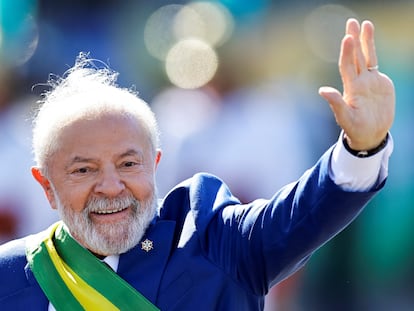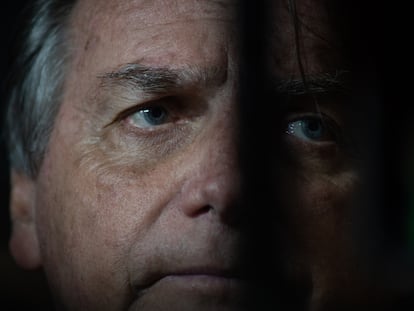Lula, Judge Moro, Odebrecht... What happened to the victims and key players of Brazil’s Lava Jato case
The biggest corruption investigation in Brazilian history, which had repercussions throughout Latin America, turns ten years old. It has become irrelevant, and many sentences have been overturned in the country where it started

In recent years, Brazilian politics has been on a roller coaster ride due to the effects (and ups and downs) of the Lava Jato anti-corruption investigation. The police called it Lava Jato — car wash, in Portuguese — because it was born in a nondescript Brasília gas station and car wash on March 17, 2014, when a money launderer who operated there was arrested. The first shock came within days. A high-ranking Petrobras official went to jail. But that was just a preview of the case that turns a decade old on Sunday. Lava Jato grew into a tangled web, with the Brazilian state-owned company Petrobras as the epicenter of the plot that shook Brazilian politics and justice like never before.
The case had countless offshoots. In 2016, the Workers’ Party (PT) was ousted from power by Congress. The fight against corruption became a great national crusade, paving the way for the far right to win the presidency in 2018. Luiz Inácio Lula da Silva was imprisoned and regained freedom 580 days later; he then put the left back in power in 2022. A week later, Bolsonaro supporters staged a coup attempt in Brasília.
In Brazil, the Lava Jato case resulted in 174 convictions and over 200 plea deals. The public coffers recovered 4.3 billion reais ($860 million, €790 million), most of which went to Petrobras.
Below is a broad overview of the Lava Jato’s main protagonists, where they were at the height of the case and where they are now. The fate of the most prominent figures has taken a 180-degree turn. Some of the legal outcomes have been overturned. And, as this is the homeland of the soap opera, the hero has become the villain and vice versa. That is, former judge Sérgio Moro and his main prisoner, Luiz Inácio Lula da Silva, have switched places.
Sérgio Moro, 51 years old
For years, investigative judge Sérgio Moro embodied the Lava Jato case and the promise that it would mean the end of corruption and impunity for the powerful. He was Lula’s nemesis. But the days when he was hailed as a hero by gigantic crowds and ran for president of Brazil have long been forgotten.
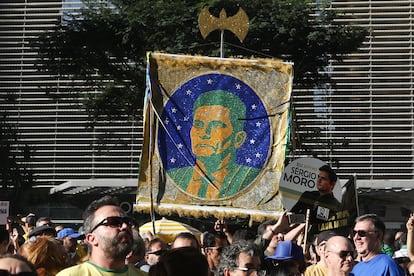
In 2018, Moro accepted the far-right-wing Jair Bolsonaro’s nomination to become Minister of Justice (which meant hanging up his robe and forgetting about a juicy pension). In 2021, the Supreme Court ruled that he was biased in how he judged Lula.
And now he is facing a trial for election campaign irregularities. As a result, he may lose the Senate seat where he took refuge when things went bad. Two moments precipitated his fall from grace: slamming the door on the Bolsonaro government that quickly turned him into a traitor in the eyes of Bolsonaro and his supporters, and the revelation of the messages he exchanged with the prosecutors of the case, which showed that he was not impartial, as reported in The Intercept, EL PAÍS and other media.
Moro’s attempt to represent an alternative to the presidential candidacies of Lula and Bolsonaro failed miserably. He had to content himself with serving in the Senate. When he won the seat in 2022, his wife was also elected as deputy.
His questioning of Lula is one of the investigation’s most memorable moments; it was a full-fledged duel between a veteran former president and a young judge from the provinces. Lula has declared that he supports Moro keeping his seat.
Luiz Inácio Lula da Silva, 78 years old
The veteran politician — who ended his second term in office in 2009 with an approval rating of 86%, the envy of every democrat on the planet — was convicted of corruption in the Lava Jato case. The founder of the PT spent 580 days in prison in a Curitiba police station while proclaiming his innocence. Luiz Inácio Lula da Silva has always considered himself to be the victim of a plot against him and against the Brazilian left, perpetrated by the elites with the complicity of the mainstream media and the U.S., which, he believes, had its eye on Petrobras.
Lula was released from prison in 2019, when Bolsonaro was about to complete his first year in office. Along with thousands of other prisoners, Lula was freed when the Supreme Court reversed an earlier change in doctrine that landed the former president in jail; the court returned to the original — pre-Lava Jato — understanding that those convicted can exhaust every last appeal in freedom.
In 2021, the Supreme Court had overturned Lula’s main conviction. If he wanted to run for election, the path was now clear. It did not take him long to make up his mind to do so. Lula won, but only by the slimmest of margins.
During his time in jail, Lula read like never before and fell in love. The day he regained his freedom, he introduced his girlfriend, Janja, a sociologist and member of the PT. They got married. The first lady is one of the president’s main advisors.

The plot
Investigators uncovered a monumental system of bribes, kickbacks and illegal party financing around Petrobras in which the PT played a major role. It worked like this: Petrobras executives collected kickbacks from large construction companies in exchange for artificially inflated contracts with the company. And that money then went to the parties that appointed the oil company’s directors. The case also had repercussions beyond Brazil in countries such as Peru, Colombia, Mexico...
Something never seen before happened in Brazil and other Latin American countries. Treating the powerful with kid gloves came to an end (or seemed to come to an end). Dozens of previously untouchable politicians and businessmen were tried, convicted and imprisoned. Brazil proclaimed the end of impunity and a large part of the country enthusiastically embarked on a crusade against corruption and against the PT, considered a den of thieves.
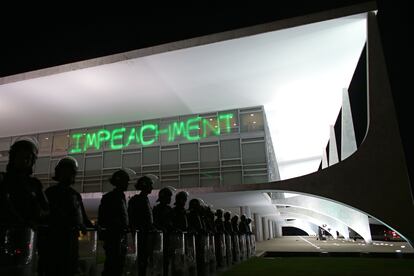
For years, the case shaped the political agenda. In 2016, Congress impeached President Dilma Rousseff at breakneck speed and abruptly and dramatically ended 14 years of progressive governments. Lula was jailed and judges barred him from running for election in 2018, paving the way for Jair Bolsonaro, Brazil’s first far-right president.
Jair Bolsonaro, 68 years old
At the height of Lava Jato, Jair Bolsonaro was a middling deputy in the so-called “lower clergy.” He dedicated his vote to impeach Dilma to military officer Carlos Alberto Brihante Ustra, who had tortured the president when she was a young guerrilla Bolsonaro saw an opportunity in the anti-corruption campaign and the popular yearning for reform. He shamelessly presented himself as an anti-establishment politician, formed a political alliance with evangelicals, took advantage of social media and rode the wave of national populism that was forming with Vladimir Putin, Donald Trump and Narendra Modi.
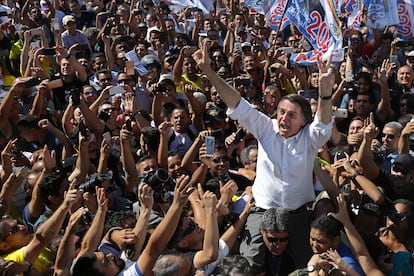
He hit the target. He was elected president and appointed Moro as minister. His term was beset by the pandemic—which he handled with denialist policies—and constant coup threats. He narrowly lost the next presidential election. Since he was disqualified from politics, he will have to wait until 2030 to be able to run for office again. Evidence of his role in plotting a coup plot is proliferating. Many are betting on whether he will end up in jail.
Dilma Rousseff, 76 years old
Lula’s political heir, Dilma Rousseff, was impeached after she very narrowly won a second term in office. By the time Congress threw her — and the PT — out of power, Brazil was mired in a recession because in the final stretch she opened the tap of public money in a desperate attempt to survive. The middle class still does not forgive her for that sin. Her downfall had a very macho component, coupled with much criticism that she lacked the abilities that Brazilian politics requires. She was ostracized. In the 2018 elections, she did not even win a senate seat in Minas Gerais, her home state. It was only with the return of Lula — her political godfather — to power that she was rehabilitated. Lula considered appointing Rousseff as an ambassador, but that would have required a Senate hearing, so he decided to send her to Shanghai, China, to lead the BRICS bank (Brazil, Russia, India, China, South Africa).
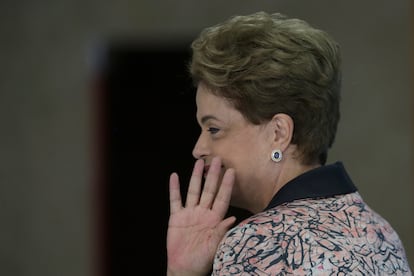
Deltan Dallagnol, 44 years old
Little known outside Brazil, Deltan Dallagnol was Moro’s professional partner as the prosecutor in the Lava Jato case. He figured prominently in one of the case’s highlights: going after Lula. Dallagnol appeared to announce that Lula was the Mr. X in question in the plot, backed up by a PowerPoint presentation (with the word Lula in a circle in the center surrounded by 14 other circles with phrases such as “criminal perpetuation in power” and “the greatest beneficiary”) that still fuels memes. Elected deputy in 2022, he lost his seat due to irregularities within a few months.

Eduardo Cunha, 65 years old
He was the president of the Chamber of Deputies who accepted the impeachment petition against Rousseff for processing. Sentenced to over half a century in prison, Eduardo Cunha spent more than three years behind bars. Several of the sentences have been overturned. Disqualified from office himself, his daughter Danielle Cunha, 36, was elected deputy in 2022. And there he was, protecting her.
Bolsonaro managed to get the two presidents of Congress who were allied with him to shelve the one hundred impeachment petitions filed against him. And, without much fanfare, the far-right leader, who had come to power as a great champion against corruption, reduced the investigators’ resources and the Lava Jato case languished until it became irrelevant. Recently, the scheme has only been in the news because of the continuous overturning of legal decisions.
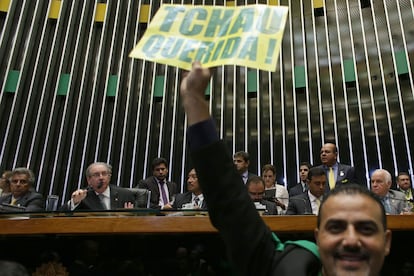
The Supreme Court
Supreme Court Justice Teori Zavascki, who was presiding over the Petrobras case, died in 2017 in a small plane crash. His death came as a shock. The case went to Zavascki’s colleague. Since the court broadcasts their deliberations live, the 11 judges became as famous as the national soccer team. Political junkies followed the case as if it were a daily soap opera. Lava Jato led the judges to tighten some of the rules in one of the world’s most rights-based judicial systems.
Odebrecht and other major construction companies
The Odebrecht construction company, which had a secret department dedicated exclusively to the payment and management of bribes, was investigated for the Lava Jato case in the U.S. In 2017, it pleaded guilty and reached a court settlement in New York. It agreed to pay a $2.6 billion fine, the largest ever imposed for corruption.
The president and grandson of the founder spent two and a half years in jail after being convicted of bribing much of Latin America’s political elite. Released from prison with an electronic ankle bracelet, he never returned to the public sphere. The company changed its name to Novonor. The convicted companies lost their preeminent positions in the business. Now, on the case’s tenth anniversary, the firms that managed to survive are trying to renegotiate the fines that are still pending and even seek to have the sentences reduced.
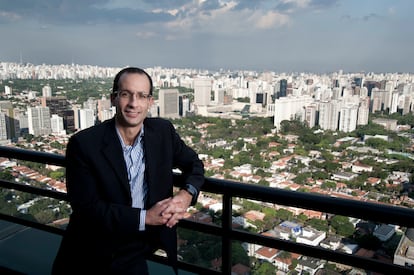
Sign up for our weekly newsletter to get more English-language news coverage from EL PAÍS USA Edition
